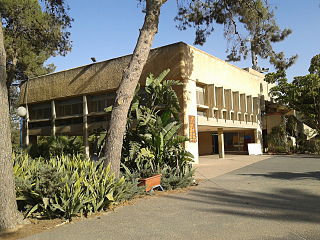This page is based on this
Wikipedia article Text is available under the
CC BY-SA 4.0 license; additional terms may apply.
Images, videos and audio are available under their respective licenses.
Aleinu or Aleinu leshabei'ach, meaning "it is upon us or it is our obligation or duty to praise God," is a Jewish prayer found in the siddur, the classical Jewish prayerbook. It is recited at the end of each of the three daily Jewish services. It is also recited following the New Moon blessing and after a circumcision is performed. It is second only to the Kaddish as the most frequently recited prayer in current synagogue liturgy.

According to Latter Day Saint theology, seer stones were believed to have been used by Joseph Smith, as well as ancient prophets, to receive revelations from God. Members of The Church of Jesus Christ of Latter-day Saints believe that Joseph Smith used a seer stone in the Book of Mormon translation effort.

An ephod was an artifact and an object to be revered in ancient Israelite culture, and was closely connected with oracular practices and priestly ritual.

Shlomo Riskin is an Orthodox rabbi, and the founding rabbi of Lincoln Square Synagogue on the Upper West Side of New York City, which he led for 20 years; founding chief rabbi of the Israeli settlement of Efrat in the West Bank; dean of Manhattan Day School in New York City; and founder and Chancellor of the Ohr Torah Stone Institutions, a network of high schools, colleges, and graduate Programs in the United States and Israel. He belongs to the Modern Orthodox stream of Judaism.

Hebrew literature consists of ancient, medieval, and modern writings in the Hebrew language. It is one of the primary forms of Jewish literature, though there have been cases of literature written in Hebrew by non-Jews. Hebrew literature was produced in many different parts of the world throughout the medieval and modern eras, while contemporary Hebrew literature is largely Israeli literature.
In 1966, Agnon won the Nobel Prize for Literature for novels and short stories that employ a unique blend of biblical, Talmudic and modern Hebrew, making him the first Hebrew writer to receive this award.
Nehama Leibowitz was a noted Israeli Bible scholar and commentator who rekindled interest in Bible study.
Tetzaveh, Tetsaveh, T'tzaveh, or T'tzavveh is the 20th weekly Torah portion in the annual Jewish cycle of Torah reading and the eighth in the Book of Exodus. The parashah reports God's commands to bring olive oil for the lamp, make sacred garments for the priests, conduct an ordination ceremony, and make an incense altar.

Jewish literature includes works written by Jews on Jewish themes, literary works written in Jewish languages on various themes, and literary works in any language written by Jewish writers. Ancient Jewish literature includes Biblical literature and rabbinic literature. Medieval Jewish literature includes not only rabbinic literature but also ethical literature, philosophical literature, mystical literature, various other forms of prose including history and fiction, and various forms of poetry of both religious and secular varieties. The production of Jewish literature has flowered with the modern emergence of secular Jewish culture. Modern Jewish literature has included Yiddish literature, Ladino literature, Hebrew literature, and Jewish American literature.

The priestly mitre or turban was the head covering worn by the High Priest of Israel when he served in the Tabernacle and the Temple in Jerusalem.

Rachel Elior is an Israeli professor of Jewish philosophy at the Hebrew University of Jerusalem in Jerusalem, Israel. Her principal subject of research has been the history of early Jewish mysticism.

11 points in the Negev refers to a Jewish Agency plan for establishing eleven settlements in the Negev in 1946, prior to the establishment of the State of Israel.
Various forms of witchcraft and divination in the Hebrew Bible are mentioned in a generally disapproving tone. The Masoretic Text of the Torah forbids:

The Beersheba Subdistrict was one of the subdistricts of Mandatory Palestine. It was located in modern-day southern Israel. The city of Beersheba was the capital. After the 1948 Arab–Israeli War, the subdistrict largely transformed into the Beersheba subdistrict of Israel.
The priesthood of ancient Israel was the class of male individuals, who, according to the Hebrew Bible, were patrilineal descendants from Aaron, who served in the Tabernacle, Solomon's Temple and Second Temple until the destruction of Jerusalem in 70 CE. Their temple role included animal sacrifice. The priests are viewed as continuing in the Kohen families of rabbinical Judaism.

The Yale University coat of arms is the primary emblem of Yale University. It has a field of the color Yale Blue with an open book and the Hebrew words Urim and Thummim inscribed upon it in Hebrew script. Below the shield on a ribbon appears Yale's official motto, Lux et Veritas.
Nathan Lopes Cardozo is a Dutch-Israeli rabbi, philosopher, and scholar of Judaism. A sought-after lecturer on the international stage for both Jewish and non-Jewish audiences, Cardozo is known for his original and often fearlessly controversial insights into Judaism. His ideas are widely debated on an international level on social media, blogs, books and other forums.
William Muss-Arnolt (1860–1927) was an Assyriologist and librarian known for his exposition of the Assyrian language.









